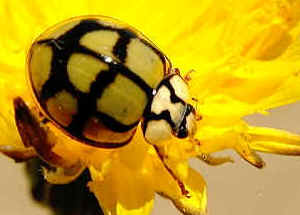

A vaginal swab tip or 200 μL of milk was added to 400 μL of Chelex suspension and incubated and shaken for 30 min at 56☌, followed by an incubation step for 8 min at 100☌. The sampled dairy goat farms represent 60% of the farms with known abortion problems during 2007–2009.ĭNA was extracted from vaginal swabs and milk by using Chelex resin (InstaGene Bio-Rad, Hercules, CA, USA). burnetii abortion outbreak in a goat farm in 2001 (farm AG), which was diagnosed retrospectively ( 22). Samples of immunohistochemically confirmed Q fever–positive goat and sheep placentas (farms N, AE, AF, and Z) and fetal tissue (farm E) were provided by the Animal Health Service, including 1 archived histologic section of paraffin-embedded placenta from a C. These samples were submitted for confirmation testing of farms with clinically suspected Q fever (farms A–D, N, O, P, and Q), for tracing the source of human Q fever cases (because of proximity to human case-patients, farms H, J, and M) or for bulk tank milk monitoring (farm Y). Vaginal swabs and milk samples from dairy goats and dairy sheep were sent to the national reference laboratory for notifiable animal diseases (the Central Veterinary Institute, part of Wageningen UR) by the Dutch Food and Consumer Product Safety Authority in accordance with the regulation in place at that time. burnetii genotypes across the Netherlands and compare the genotypes with what is internationally known. In addition, we show the geographic distribution of these C. burnetii–positive samples from 14 dairy goat farms, 1 dairy cattle farm, and 2 sheep farms were typed by MLVA. This information is necessary to evaluate the epidemiologic link between the source and human cases and to compare the outbreak genotypes with internationally known genotypes. burnetii in domestic ruminants responsible for the human Q fever outbreak. Our objective was to show the genetic background of C. This knowledge is essential for gaining insight into the molecular epidemiology of the organism and the origin of the outbreak, as well as for outbreak management purposes. burnetii ( 16).Īlthough dairy goats and dairy sheep appear to be the source of the human Q fever outbreak in the Netherlands, no information is available about the genetic background of C. A limited investigation by genotyping with MLVA recently showed that farms and humans in the Netherlands are infected by multiple different, yet closely related, genotypes of C. The connection between Q fever abortion storms in small ruminants and human Q fever cases is based primarily on epidemiologic investigations ( 18 – 21).

These small ruminants are considered the source of the human Q fever outbreak in the Netherlands ( 17). On 28 dairy goat farms and 2 dairy sheep farms, abortion storms (with abortion rates up to 80%) caused by Q fever were diagnosed during 2005–2009. Starting in 2007, the Netherlands has been confronted with one of the largest Q fever outbreaks in the world, involving 3,921 human cases in 4 successive years. A total of 17 different minisatellite and microsatellite repeat markers have been described ( 11). burnetii strains ( 11, 15) or directly on DNA extracted from clinical samples ( 16). burnetii and might be more discriminatory than multispacer sequence typing ( 13, 15). Multilocus variable-number tandem-repeat analyses (MLVA) is based on variation in repeat number in tandemly repeated DNA elements on multiple loci in the genome of C. burnetii strains or directly on extracted DNA from clinical samples ( 12, 14, 15). Multispacer sequence typing is based on DNA sequence variations in 10 short intergenic regions and can be performed on isolated C. Recently, 2 DNA-based methods for typing C.

Transmission to humans occurs mainly through inhalation of contaminated aerosols ( 4, 5, 8 – 10). burnetii per gram of placenta can be excreted ( 7). In cattle, Q fever has been associated with sporadic abortion, subfertility, and metritis ( 4, 6). The main clinical manifestations of Q fever in goats and sheep are abortion and stillbirth. burnetii and cause human cases of Q fever ( 2 – 5). However, other animal species, including pet animals, birds, and several species of arthropods, can be infected by C.

Domestic ruminants are considered the main reservoir for Q fever in humans ( 2). Q fever is a zoonosis caused by Coxiella burnetii, an intracellular gram-negative bacterium that is prevalent throughout the world ( 1).


 0 kommentar(er)
0 kommentar(er)
